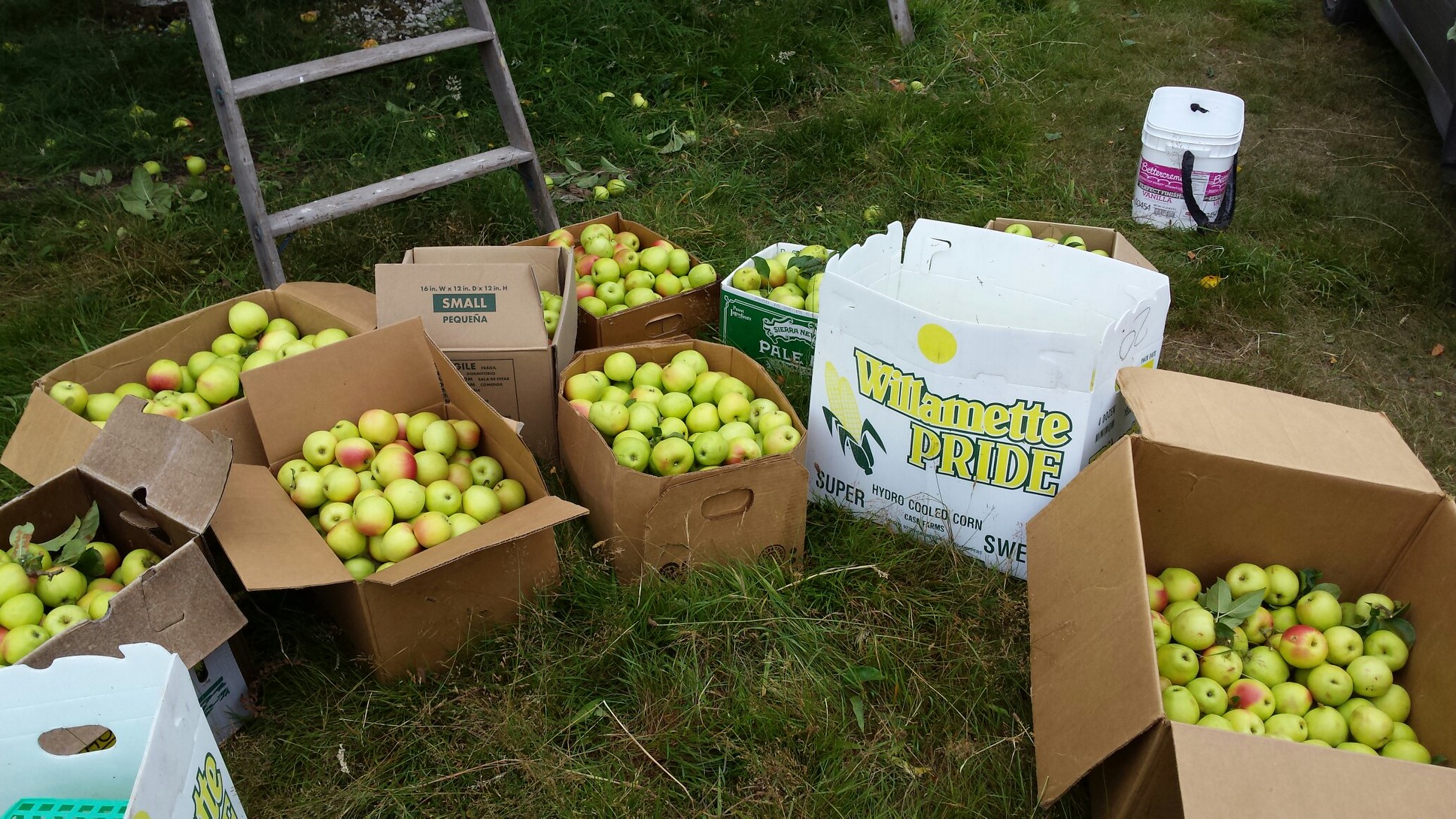It is never too early to start working on donor outreach. Unlike the growing of fruits and vegetables, building relationships with farmers, farmer’s market managers, and property owners have no offseason. Make it a routine goal to attend farmer’s markets, talk with local farmers and to explain the process of your program wherever you are. Get in touch with your local Extension office as they have existing relations with many of the small farmers in your area. They can help you with contact information and give you a lead in who may be interested in donating. A good portion of promotion will happen while talking with strangers at a coffee shop or public event. Clallam County is lucky to be situated in a climate hospitable to year-round vegetable production and is home to countless backyard orchards. You never know when you are talking with a potential donor. Be ready to talk gleaning. Additionally, many potential glean sites will be found by recruiting donors at fairs and outreach events and by posting promotional flyers with program contact information around town. GLEANING FLYER
It is critical that a gleaning coordinator be able to concisely explain the program to a volunteer or produce donor. The most frequently recurring question received by the WSU Clallam County Gleaning program is, “What is Gleaning?” If this is the first question from a member of the public, some education is in order. Practice with a co-worker, your cat, a pen and paper or with a stranger to get your elevator speech down. Not being able to define gleaning will leave potential volunteers and donors in the dust if you go on to talk about liability, distribution or any positive impacts. During your initial meetings make sure to talk with the food banks and agencies that will be receiving gleaned produce. Knowing the entire process from field to food bank will help the gleaning coordinator tell the programs’ story.
If you are entering an existing program or creating one from scratch take the time to introduce yourself to existing or potential donors (In either case you’re the new person in the equation). Let them know who they will be working with and provide an opportunity to talk about issues and areas for improvement. Most farmers seem to like a handshake in person if they have the time to speak at all. As much as calling ahead of a meeting is always recommended don’t be afraid to stop by a farm and see if someone is available. Often times a farm worker isn’t going to make an appointment in the middle of the day to speak for twenty minutes. This disturbs their work and can be an anticipated headache. Feel out the situation first but it rarely backfires. By visiting a farm you are also able to see where gleaners will be driving, how the fields are arranged, what packaging is available and much more. Giving volunteers a heads up about potential potholes and muddy roads can be really helpful. For individual home sites, the process of continuing homeowner engagement can be challenging. Send appreciation postcards at the beginning and end of the season updating homeowners with program contact information, benefits of the program and statistics on who the program has helped. Create press releases, newspaper raves and social media posts thanking homeowners and farms for their participation. In order to maintain the relationship with the homeowners, it is critical to keep an updated glean site excel file with all of the homeowner’s/farmer’s information such as names, addresses, phone numbers, types of produce available, any special considerations and produce ripening times. GLEAN SITE EXCEL FILE
Everybody works hard to earn a living and to provide for themselves and others. In terms of a gleaning program, this includes the volunteers in the fields, food banks and everyone in-between. When a resource has planned a season in advance, purchased seed, given time to grow, hours of direct attention, physical space, water, fertilizer, a good weeding or two and then donated, you better be sure a thank you is in order. A thank you can take many forms but never goes unnoticed. Throughout the gleaning season, a farmer should know the value they are adding to the community. A thank you card or note at the end of the season is always a good bet. Be sincere and personal. Additionally, encourage the gleaners to thank the homeowners for the opportunity to glean, as well as offer them a box of the picked produce. If gleaners can give the homeowner an idea of where the produce will be donated, the homeowner will feel more included in the process.


